Search for Elephants (and Do Some Good) in Aberdare National Park, Kenya
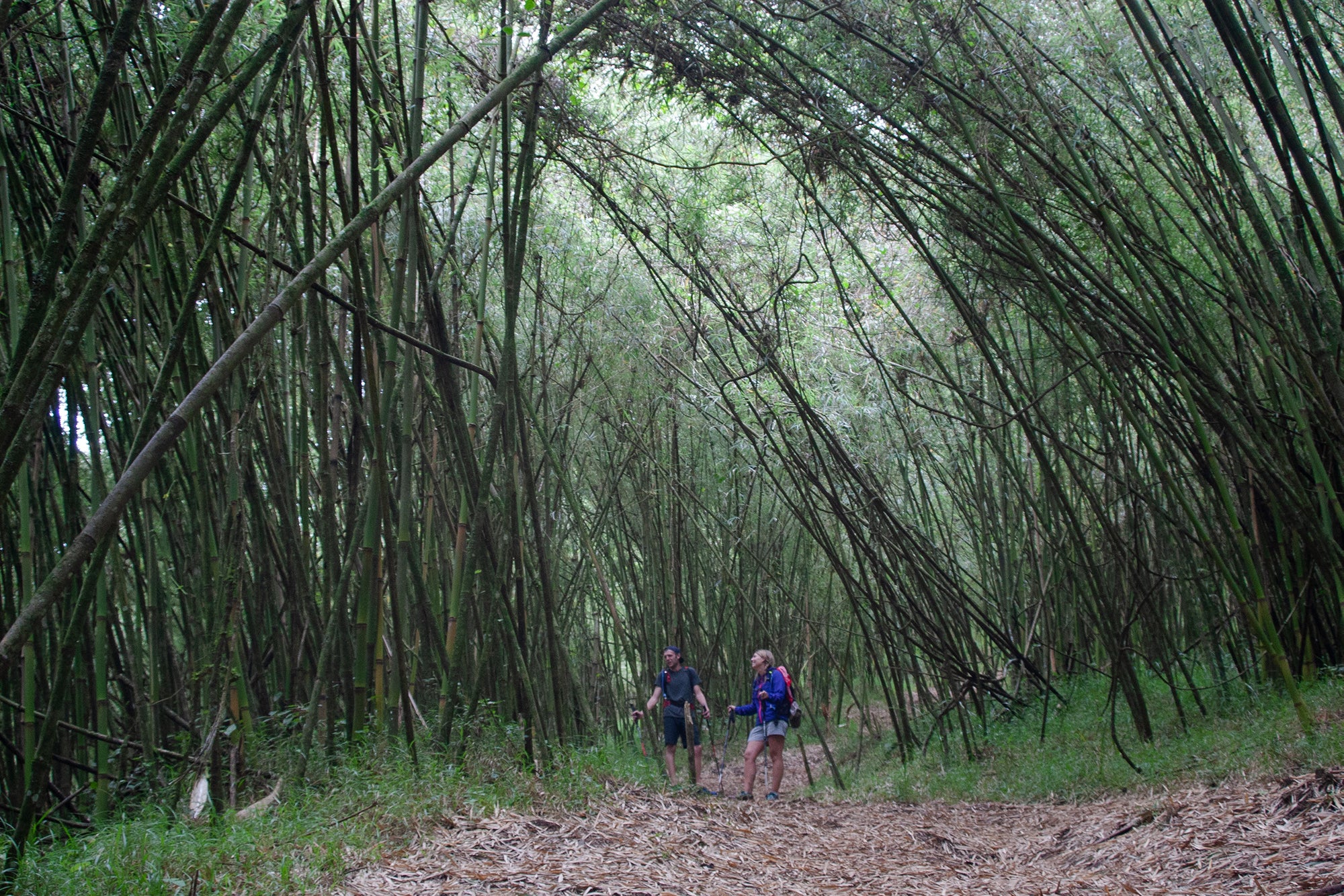
'Adam Roy'
As we trudge up Elephant Hill in Aberdare National Park, I squint and try to picture a herd of full-size pachyderms hiding in the bamboo forest. Around us, 30-foot canes grow thick, crisscrossing and bending under their own weight. The trail is a ribbon of mud, so thin we have to walk in single file and so muddy it grabs at my trail runners, threatening to pull them off my feet. It seems like a strange place for such large animals. Still, the elephants are around here, somewhere, hence the pair of armed rangers leading the way.
We came to Kenya to see how a new effort from one of the outdoor industry’s biggest water treatment players, MSR, is making inroads into providing rural areas with safe drinking water using technology originally developed for the backcountry. Earlier this week, we gathered in a classroom at Flying Kites, a nonprofit school and teacher training academy located within walking distance of the park entrance. Zac Gleason, a biologist who worked on the device, trained us on how to use their Community Chlorine Generator, a coffee-cup-size water treatment device. After delivering the chlorine generators to a pair of local public schools, we took a day off to make the 11-mile climb to the top of Elephant Hill, a broad massif with the profile of the eponymous animal that rises to 12,815 feet.
About an hour and a half into our hike, the trail bursts out of the bamboo and into the alpine. We ramble along the ridge through grass, giant heather, and tiny, orange wildflowers. After a lunch break at Point Despair, Elephant Hill’s cheerfully named false summit, a rocky spur trail takes us to the true top, where we soak in 360-degree views of neighboring Mt. Kinangop, a craggy, dormant volcano, and Mt. Kenya, Africa’s second-highest peak at 17,057 feet. It’s so awe-inspiring, it almost makes the missing elephants feel like an afterthought. Almost.
Hike It
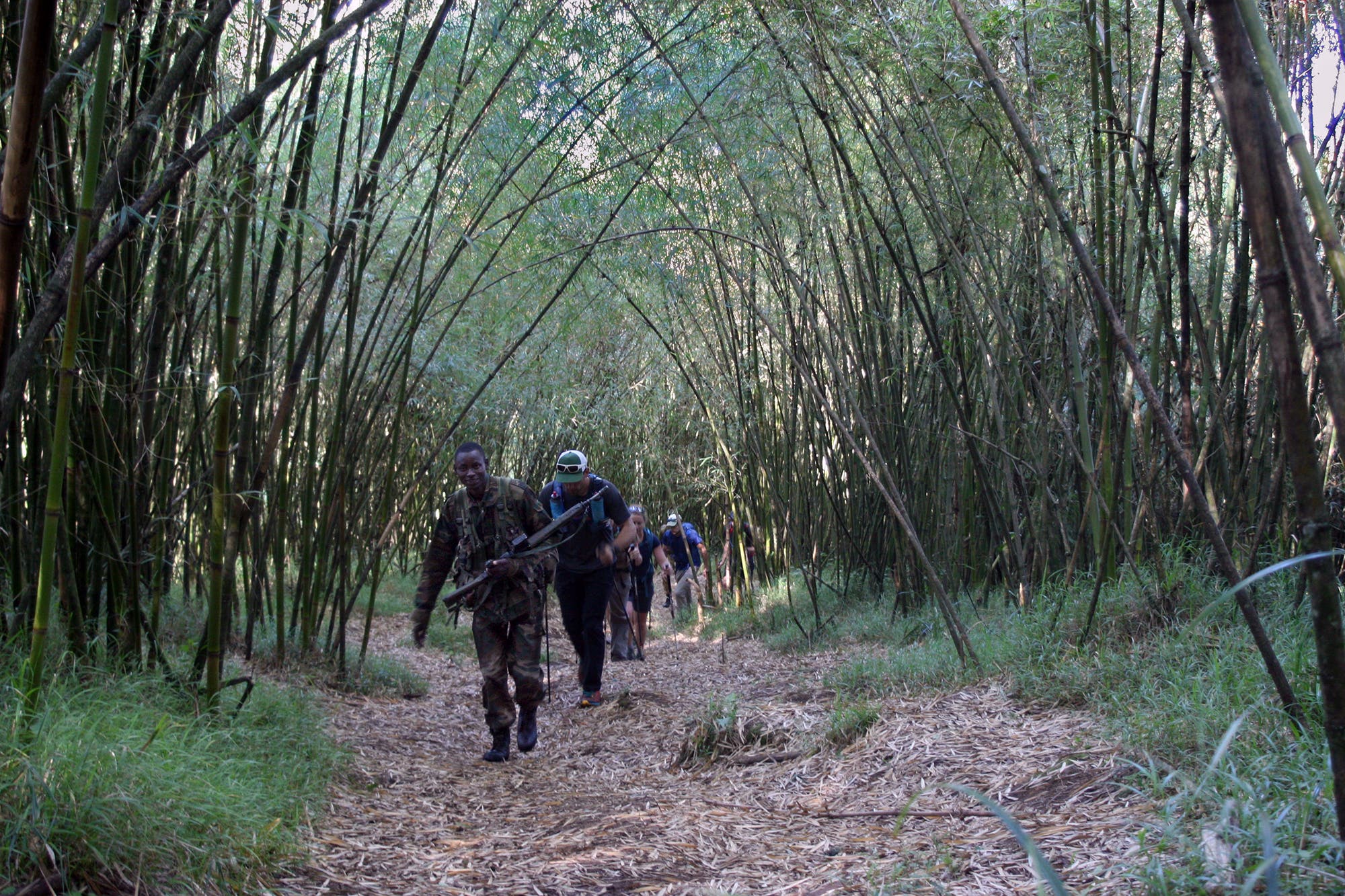
The uphill portion of the hike starts with a tough ascent through a thick, bamboo forest.
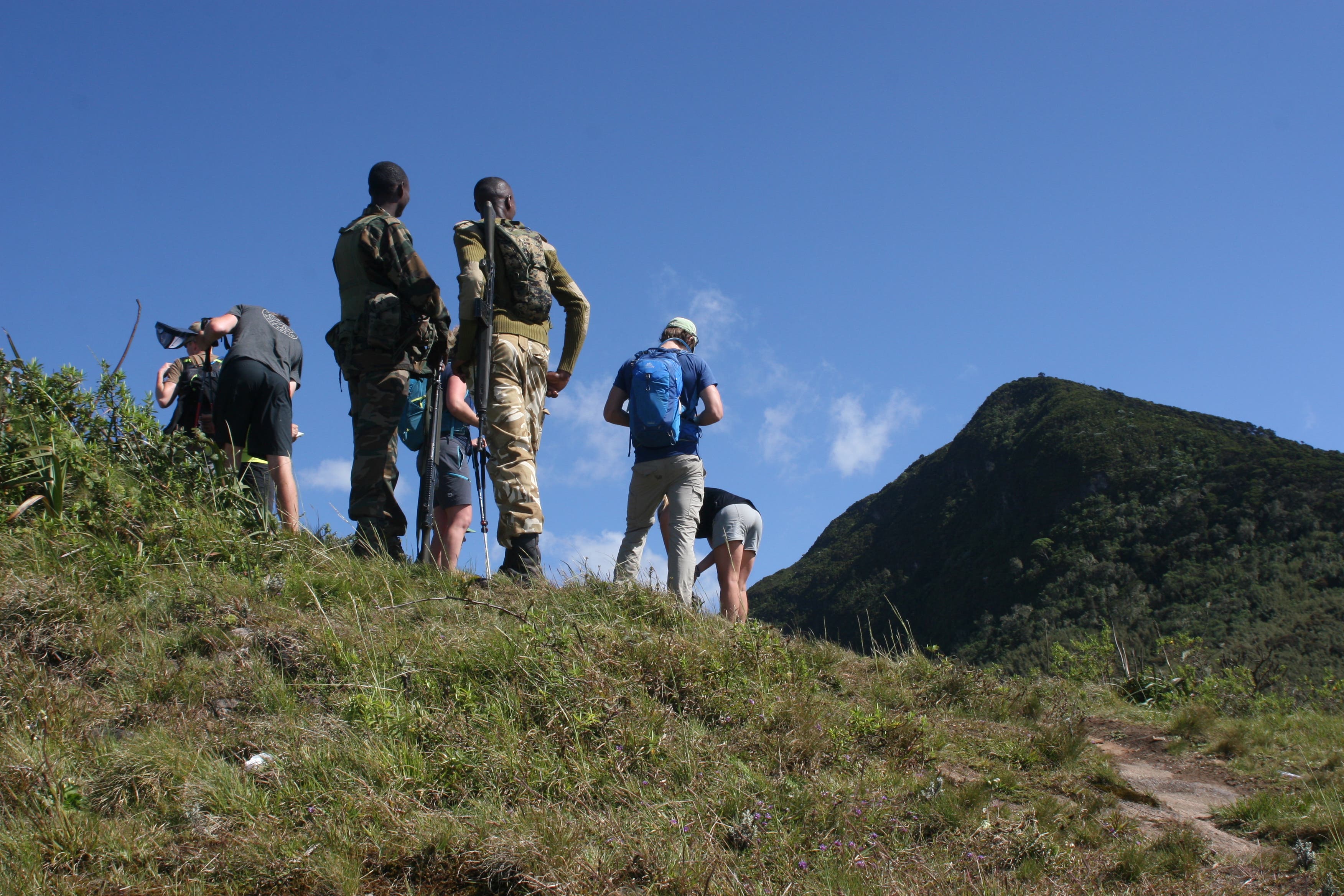
Point Despair is a classic false summit.
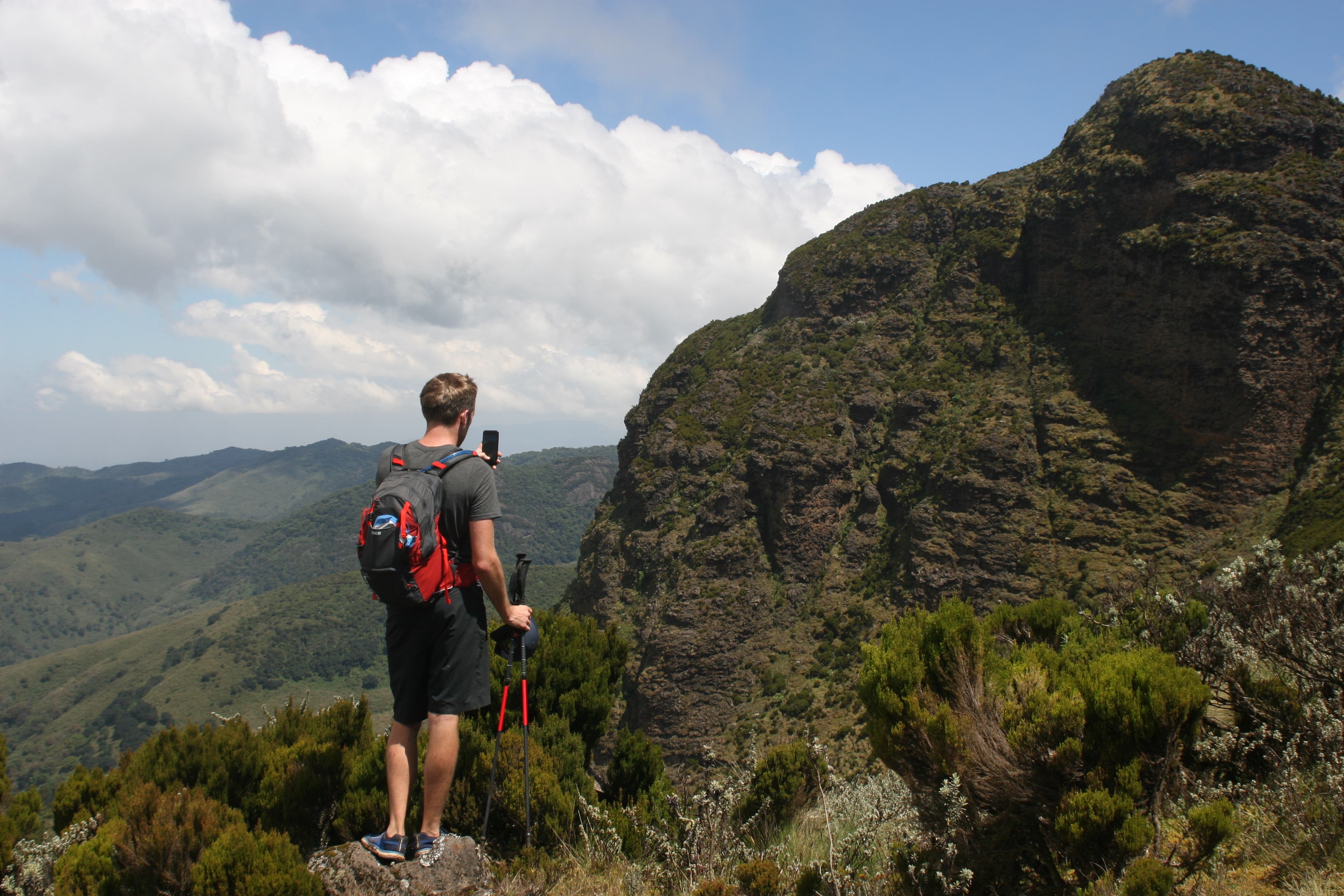
Steep cliffs guard the sides of the mountain.
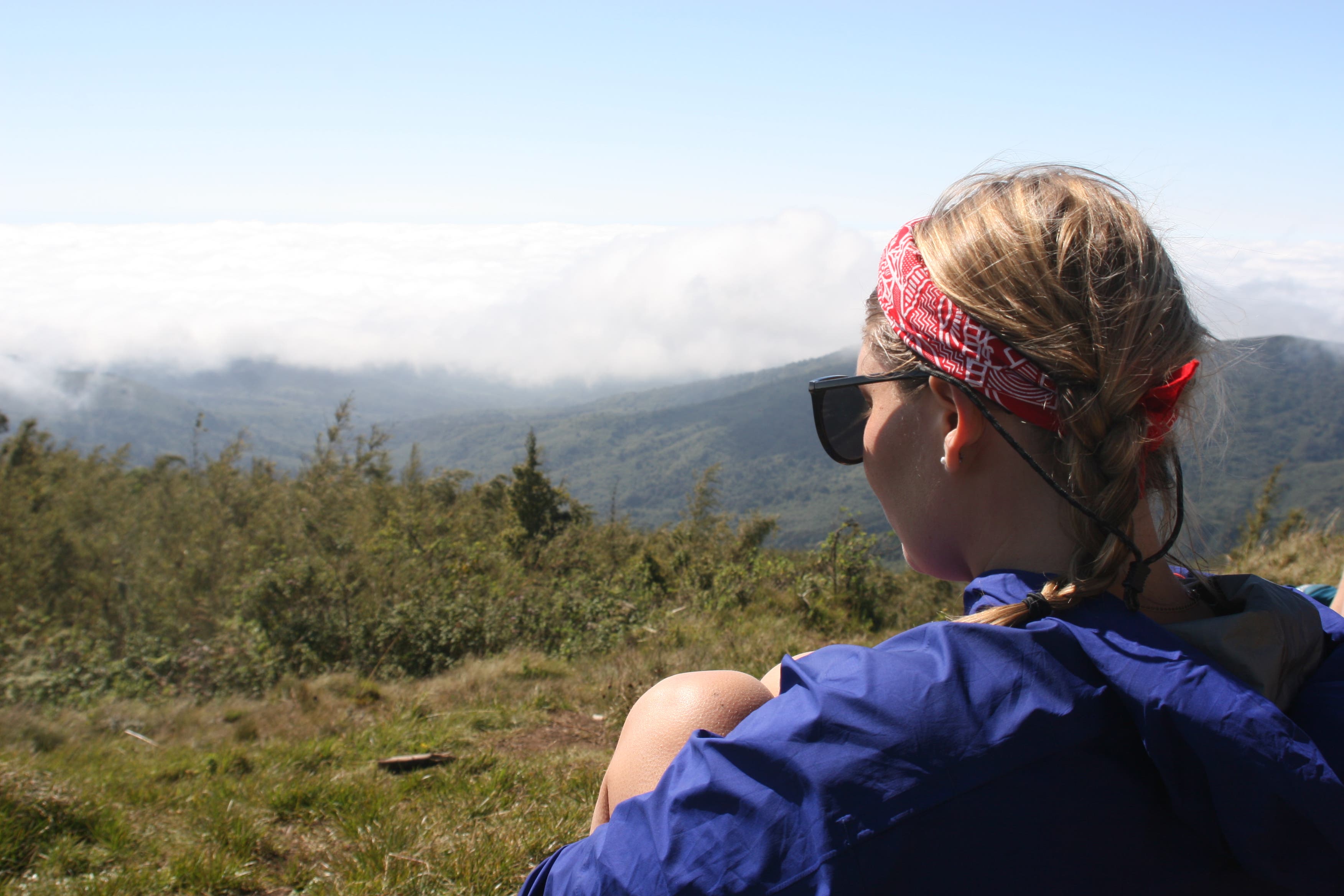
Despite the name, Point Despair is a pleasant place for a breather and a photo opportunity.
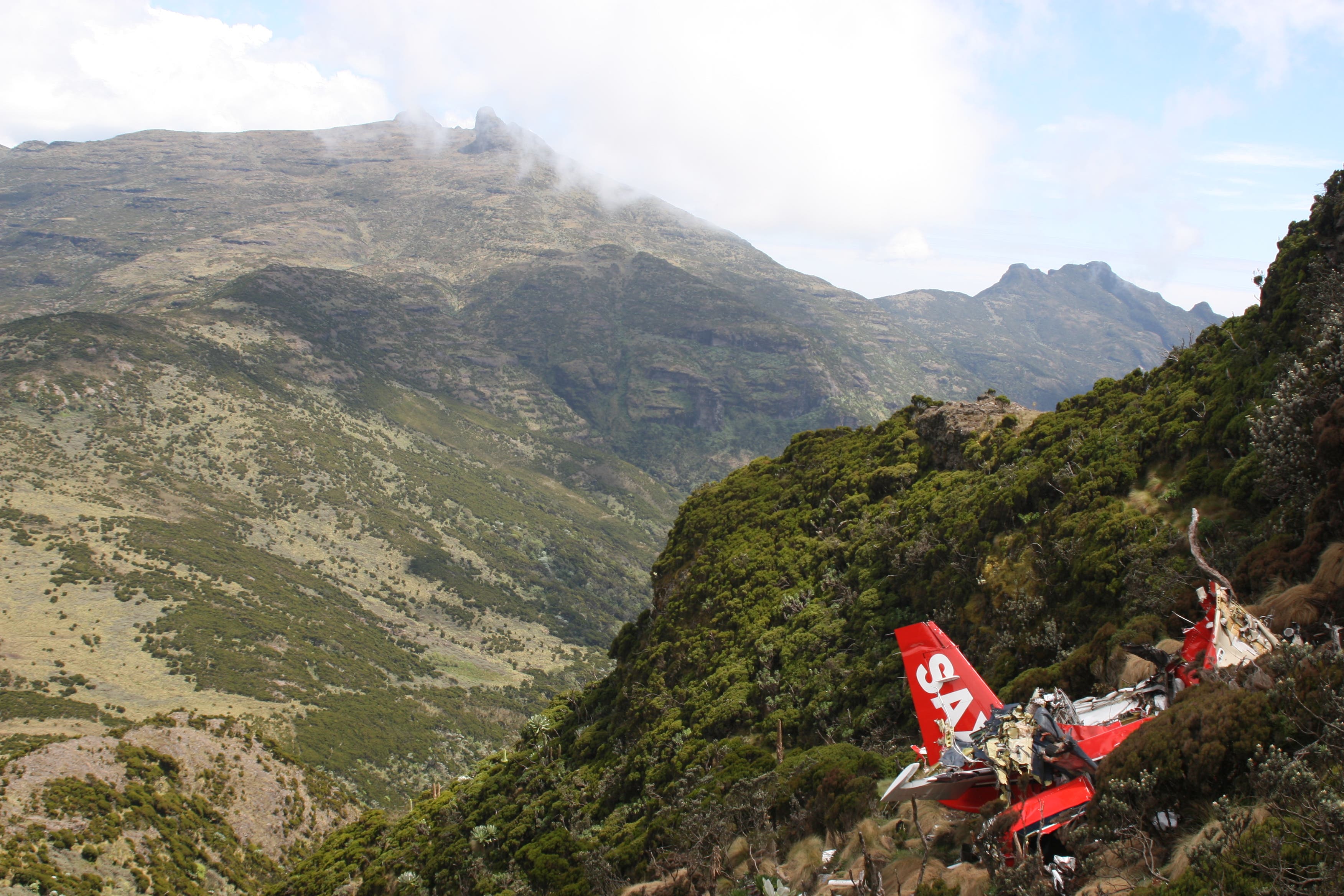
The wreckage of a chartered plane is still visible near the summit of the mountain.
Take a boda boda—a usually-beat-up motorcycle taxi, steel your stomach—to the Njabini Forest Station, where you’ll pay the entrance fee and begin your hike. Follow the trail through farmers’ fields into the bamboo thicket. Here, the real climbing begins: slog uphill on a muddy track, keeping your eyes open for elephant droppings and red forest duiker, a 3-foot-long antelope that forages in the bush. After a few hours, emerge onto an exposed, grassy ridge and follow a rolling trail to Point Despair, which overlooks the sheer face of the peak and the town of Njabini below. Pick your way up the elephant’s rocky back to the summit, passing the wreckage of a passenger plane along the way.
Wildlife
Besides elephants, Aberdare National Park is home to warthogs, olive baboons, spotted hyenas, and even rhinos and leopards. Keep an eye trained on the underbrush on your way through the bamboo for a chance at spotting some of the park’s smaller denizens.
Plane Crash
In June 2018, a Nairobi-bound FlySax charter flight crashed a few hundred feet below the summit of Elephant Hill, killing both pilots and all eight passengers on board. The wreckage of the plane is still visible on the slope just below the trail.
Stay Longer
Post up for the night in the forested Reedbuck Campsite, located 1.5 miles from the Kiandogoro gate on the park’s east side (contact the park for rates). In the morning, take the 20-minute hike to the Karura Falls Lookout, where the river of the same name drops 165 feet through a narrow gorge.
Clean Water
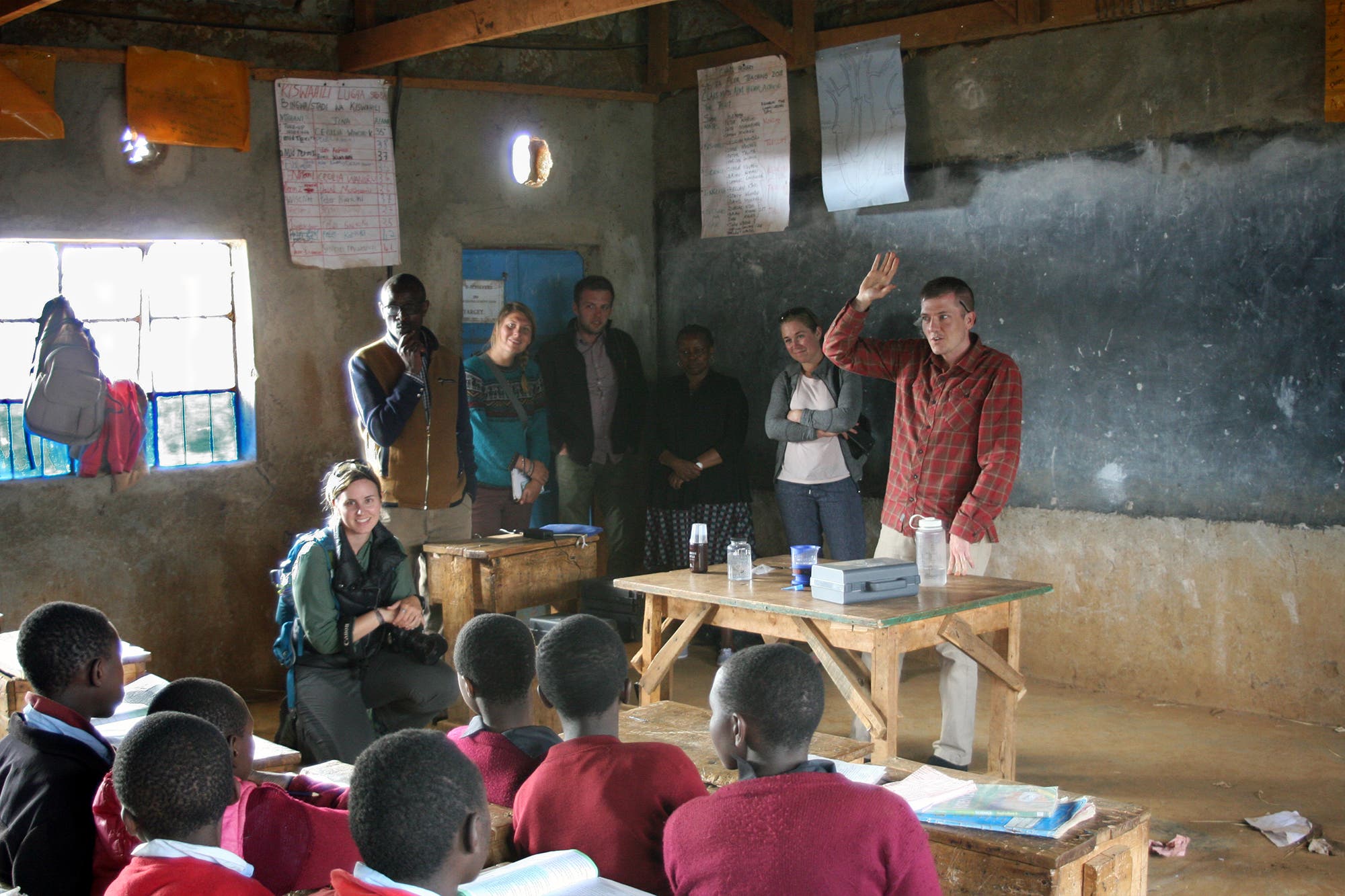
The area around Aberdare National Park is rich in water—one nearby facility, the Sasumua Treatment Plant, provides roughly 20% of Nairobi’s supply—but that doesn’t mean that residents in nearby, mostly rural communities have enough safe water to drink. The Kenyan government estimates that about a third of the population of Nyandarua County, where Flying Kites is located, have no access to improved water sources, instead collecting their drinking water from ponds and rivers. For students at local primary schools, that can mean frequent illness and interruptions to their education.
MSR’s solution: the Community Chlorine Generator. Built on technology developed in conjunction with the U.S. military, the generator uses table salt, water, and electricity from a wall socket or motorcycle battery to create a chlorine solution that can treat up to 200 liters of water at a time. MSR Global Health, a division of MSR, is partnering with Flying Kites to distribute the devices, provide training on their use to teachers and students, and act as trusted liaisons to local communities where mistrust around foreign involvement in water treatment are still common. According to the company, some 2,500 of the devices are now in the field, serving about 500,000 people around the world.
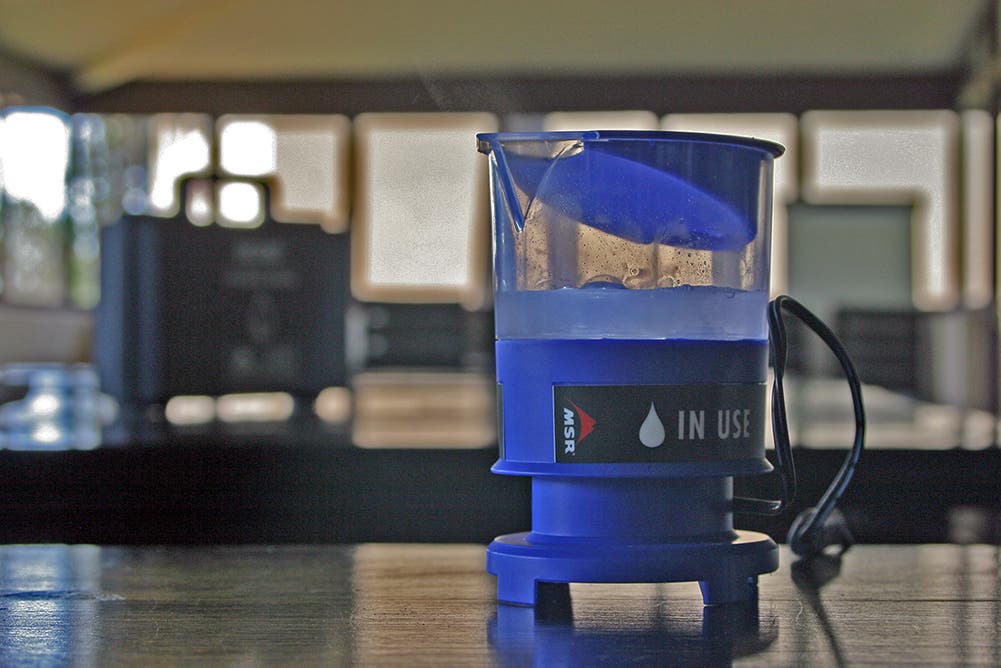
Interested in supporting this campaign and having an adventure at the same time? Flying Kites and MSR are offering hikers the chance to summit Kilimanjaro and visit the school to see their programs in action. The trip costs $2,400, plus a $3,000 fundraising commitment.
Distance 11 miles (out and back) Trailhead Njabini Forest Station Permit $52 for adult non-residents (a ranger will also need to accompany you to the top; $40/day)